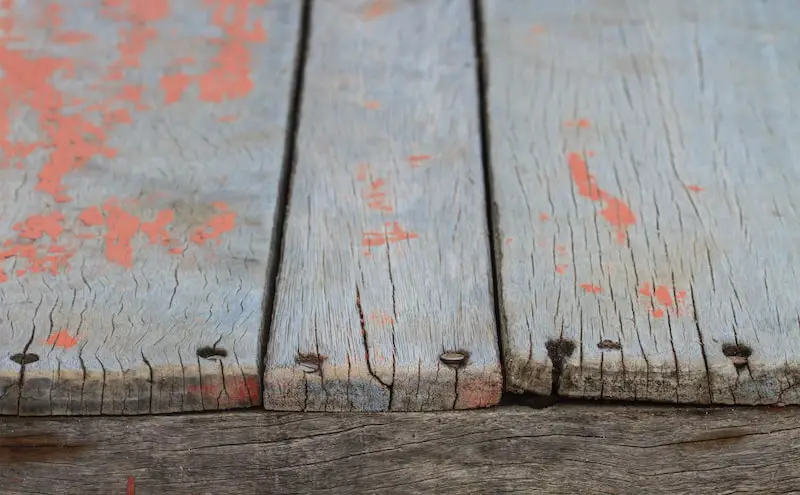When you buy a homeowners insurance policy, you are protecting your house in the case of sudden and unexpected events. There is often a list of events that are covered and many that are considered exclusions. When reviewing a policy, a homeowner may wonder if their homeowners insurance covers wear and tear.
Homeowners insurance does not cover wear and tear. The purpose of a homeowners policy is to protect a property against a sudden unexpected event such as a natural disaster or accident. Wear and tear, on the other hand, is a natural breakdown of the property over time, and if an owner were to ignore the maintenance, it is considered neglect under an insurance policy.

Wear and tear is considered an exclusion in most insurance policies. Below we go into more detail about what wear and tear is considered and how it will affect a claim against your homeowner’s insurance.
- Normal wear and tear is not covered by home insurance policies.
- Homeowners are expected to perform basic maintenance on their homes in order for their insurance to consider a claim valid.
- If a homeowner ignores maintenance duties, this can be considered neglect and result in the denial of a claim.
Is it damage or wear and tear?
When filing a claim for your property with your home insurance company, the agent in charge of assessing the claim will need to determine whether the claim is considered damage or wear and tear. In order to do this, they must define the damage and fit it within the scope of each definition.
Damage
Damage often occurs due to a covered peril or another cause. It does not happen on its own over time. Some examples of covered perils that will cause damage are:
- Windstorm. If a storm rolls through your area and the winds rip off shingles or siding or cause a tree to fall and crash into your home, these are examples of covered damage. This is because the windstorm is the covered peril that initially causes the damage.
- Fire. If a fire breaks out in your home and ruins the walls in the kitchen, this is considered covered damage. The covered peril is the fire, and the fire causes actual damage to the home.
- Burglary. If someone breaks into your home and smashes a window to get inside to rob you, the smashed window is considered damage and if any belongings are stolen they would be covered too. This is because the burglary, one of the covered perils, led up to the event and caused the window to break.
- Burst Pipe. If a pipe at home bursts and the water floods the interior of the home, the floors and carpeting will need to be replaced. The event that triggers the floor damage is the burst pipe, a covered peril. This leads the assessment to consider the flooring as damaged.
- Collapse. If a tree falls into your garage because of an ice storm, and the garage collapses in on itself, this is considered damaged. This is because the tree, a separate event, caused the collapse, and the collapse was not due to neglect or lack of maintenance.

Wear and tear
Wear and tear is a different category of damage when it comes to a homeowners policy. It is a natural process that happens due to age and time. Each example below is considered to be normal wear and tear in the eyes of an insurance provider:
- Roof Leak. If your roof begins to leak into your home and causes damage to the ceiling and surrounding areas, this is not a covered peril. This is considered to be wear and tear. Roofs naturally break down over time, and it is up to the homeowner to have repairs and maintenance performed on a roof to prevent leaks.
- Rusted Pipes. Over time, pipes get old, especially near your HVAC system. If you have corrosive water, this can happen every few years. A homeowner should regularly inspect their pipes to ensure they are not leaking and have them fixed if they are. Leaks from rusty pipes are considered normal wear and tear.
- Broken Gutters. If your gutters fall off your home due to rust or get blocked up and cause moss to grow on your home, this is normal wear and tear. Homeowners should clean their gutters twice a year and ensure they properly adhere to the home as regular maintenance.
- Chipped Paint. Even the best paint jobs do not last forever. If your paint starts to chip on your porch and water gets onto the wood, this is a problem for the homeowner to fix. This is considered a natural process over time. Homeowners should repaint and protect their decks regularly as they will not be covered in this instance by insurance.
- Pest Control. Homeowners insurance does not cover the cost of pest control. If you notice carpenter ants, rodents, or termites inhabiting your home, it is your responsibility to call a service to exterminate these pests. Simply ignoring the problem can cause an issue that is more costly and can result in a denied claim due to negligence.

Maintain your home
It is important to maintain your home to the best of your ability. Be sure to keep copies of your maintenance receipts in the case of a claim. This proof can come in handy to provide to an insurance agency to show that you have done your due diligence as the homeowner and prevent your claim from being denied and considered negligence or normal wear and tear.

